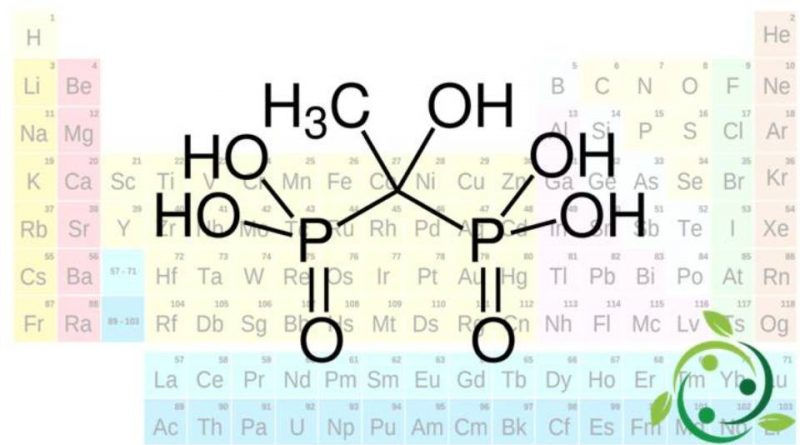Ethidronic acid
Ethidronic acid
Ethidronic acid, whose term in the official IUPAC nomenclature is: (1-hydroxyethan-1,1-dile) bis (phosphonic) acid, also known as 1,1hydroxyethylidene-1,1-diphosphoric acid is a bisphosphonate acid having formula brute or molecular: C2H8O7P2.
Ethidronic acid (abbreviated also with the abbreviation HEDP), in its natural state, presents itself as a solid, white, powder, odorless and is toxic.
Ethidronic acid is a compound that is mainly used in the detergent industry. This compound is also used as a chelating agent in complex chemistry.
The salts derived from etidronic acid are called etidronates, abbreviated as MnHEDP (where M stands for the name of the anion and n is the number of anions present in the molecule).
Chemically this compound can be obtained starting from the reaction of phosphorus trichloride with acetic acid and a tertiary amine or through the reaction of a mixture of acetic acid / acetic anhydride with phosphorous acid.
The chelating action of this acid is important in the purification processes of some metals in the aquifers. In this case, salts are formed, which precipitate in the form of a grayish powder which, being able to be eliminated, allows the purification of the waters.
Due to this characteristic, etidronic acid is used in cleaning swimming pools where its chelating action removes metals that could stain the walls of the swimming pool.
The various industrial uses of this compound include:
– as anti-corrosive for steel;
– as a retardant for oxidation and rancidity of fatty acids;
– added to detergents to preserve the effectiveness of peroxide-based detergents when used in hard water;
– added in some cosmetics to prevent the formation of radicals and to control the viscosity and the correct emulsification of the product components.
Finally, an important use of ethydronic acid occurs in the pharmaceutical field.
In fact, drugs based on this compound are used to strengthen bone tissue and treat diseases such as osteoporosis and Paget’s disease.
In fact, the derived salts, i.e. the bisphosphonates, hinder osteoclastic activity to favor osteoplasty.
Ethidronates also improve the mineralization of bones, and therefore useful against osteoporosis, even if their use for a long time causes osteomalacia.
Warning: The information shown is not medical advice and may not be accurate. The contents are for illustrative purposes only and do not replace medical advice.

